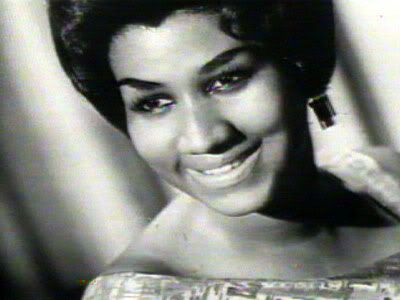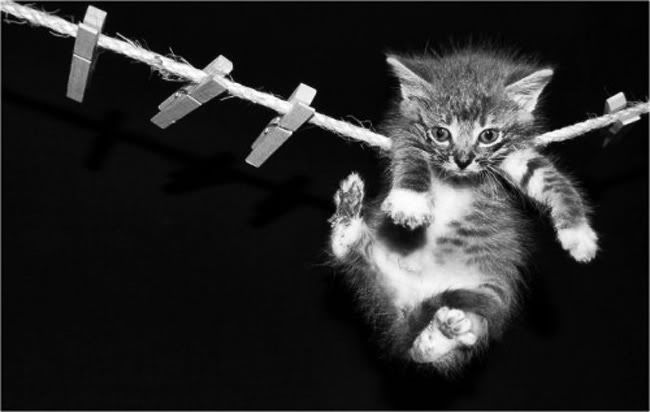Author's posts
Jul 03 2010
Original v. Cover — #32 of a Series
This week’s selection was the biggest hit by a popular 1960s group, reaching #5 on the US pop charts in October, 1968, remaining on the Billboard Top 40 charts for twelve consecutive weeks. This single would be their only hit to earn the coveted RIAA gold record certification. The song is also featured on the soundtrack for Quentin Tarantino’s 1997 film, “Jackie Brown.”
Jun 26 2010
Original v. Cover — #31 in a Series
This week’s selection was written and recorded as a blues tune by a well-known and successful male Motown performer in 1965, reached the Top 5 on Billboard’s Black Singles Chart, and crossed over to a wider audience, peaking at #35 on the Billboard Hot 100 charts. This song’s success did not end here, however.
A rising female Motown star recorded her version on February 14, 1967, along with two sisters who provided backing vocals. King Curtis’ tenor saxophone was added to this recording, and became part of her debut album, entitled, “I Never Loved a Man the Way I Love You”, the title track becoming a hit in its own right. This week’s selection was later released as a single, attaining far greater success than the original. The song remained at the #1 slot on the Billboard Hot 100 chart and retained the same position for eight weeks on the Billboard Black Singles chart. This song also went to #10 on the charts in the U.K., propelling the performer to international stardom.
Jun 19 2010
Original v. Cover — #30 in a Series
Remember 1979? Disco ruled. This week’s selection was one of the rare non-disco #1 hits on the Billboard Hot 100 charts that year, reaching that coveted pinnacle on April 14, 1979, where it remained for a week. In 1980, the song would garner Grammy Awards for both Song of the Year and Record of the Year. Michael Jackson claimed to have contributed at least one backing track for this recording, but was not so credited.
This week’s song, written by Kenny Loggins and Michael McDonald, was first recorded and released on Loggins’ 1978 album, Nightwatch and again on his 1980 album, Kenny Loggins Alive. These recordings were not a commercial success, however. The version that would become a hit would be released five months later.
Four years earlier, in 1974, Steely Dan retired from the road. Co-founders Donald Fagen and Walter Becker decided to use only session players from that point forward. Their guitarist, Jeff “Skunk” Baxter, suddenly looking for work, managed to land a job with an already successful San Francisco-based rock group, having previously performed session work with them on the pedal steel guitar.
Jun 12 2010
Original v. Cover — #29 in a Series
Do you remember the late 1960s, still have a tie-dyed shirt, your original Woodstock rock festival poster, bell bottoms, and other assorted memorabilia from this now seemingly innocent and magical era buried somewhere in your closet or attic? If so, this week’s selection should transport you back to that era, so filled with anger, protest, and yet, remarkably, relative prosperity and hope for the future.
This song from 1968 instantly evokes the counterculture of the time, even though it never became a mainstream hit, peaking at only #63 on the Billboard Hot 100 charts. The song was more successful in Canada (#35) and the U. K. (#21). The album on which the song appeared, “Music from Big Pink”, was ranked #34 on Rolling Stone magazine’s list of 500 Greatest Albums of All Time. Bob Dylan was credited with designing the cover for this album.
Remarkably, the laid-back feel of “Music from Big Pink” was cited by Eric Clapton as inspiring him to leave Cream and pursue the stylings found in his work with Blind Faith, Delaney and Bonnie, Derek and the Dominoes, and for his debut album. George Harrison also took took note of this style and the associated down-home camaraderie as the divisiveness within the Beatles intensified.
Jun 05 2010
Original v. Cover — #28 of a Series
This week’s selection was written and produced by Motown’s main production team, Holland-Dozier-Holland and occupied the #1 slot on the Billboard Hot 100 pop singles chart for two weeks in November, 1966. The song was performed by one of the most successful musical groups in history and became their eighth #1 hit. Four additional #1 hits would follow, among a total of 30 songs appearing on the Billboard Top 40 charts.
The original arrangement has been described as rooted in proto-funk and rhythm and blues, featuring a signature bass line intended to resemble a Morse code-like radio signal. The original version of the song was ranked #339 on Rolling Stone’s The 500 Greatest Songs of All Time.
Unlike many other major hits which quickly retire to relative obscurity, this song would make at least three more curtain calls during the decades that followed. Two years later, in June of 1968, a psychedelic/hard rock remake would rise to #6 on the Billboard Hot 100 charts.
May 29 2010
Original v. Cover — #27 in a Series
This week’s selection is a hauntingly beautiful number written in 1947 by eden ahbez, an American songwriter and recording artist from the 1940s to the 1960s, whose California lifestyle greatly influenced the hippie movement. Beginning in the 1940s or earlier, ahbez wore sandals, white robes, shoulder-length hair and a beard, uncommon choices in those days. He camped out below the “L” of the Hollywood sign above Los Angeles, studied Oriental mysticism, claimed to survive on three dollars per week, slept outdoors with his family and subsisted on vegetables, fruits and nuts. He passed away in 1995, just shy of his 87th birthday.
The song was recorded by Nat “King” Cole, remained a #1 hit for eight weeks in 1948, and subsequently became a pop and jazz standard. The lyrics describe a fantasy of a “strange enchanted boy…who wandered very far” only to learn that “the greatest thing…was just to love and be loved in return.” The first two measures of the song’s melody are similar to that of Antonin Dvorak’s 1887 “Piano Quintet No. 2 in A, Op. 81.” It was not known if ahbez was familiar with Dvorak’s work. The title of the song was derived from a Los Angeles-based group of which ahbez was a member.
May 22 2010
Original v. Cover — #26 in a Series
The lyrics for this week’s feature song could have very easily been lifted from the script of a lobbyist from one of our largest corporate rulers when they are meeting with their leased members of Congress. The song conveys a message that propels the matter of taking someone for granted to new heights.
That aside, this week’s selection is far more about the original performer and some of the greats who covered this song, including a then seemingly insignificant, but ultimately a major turning point in rock and roll history.
The inspiration from this week’s feature song was derived from a trip to the movies by members of the band. A phrase frequently used by John Wayne in the film, “The Searchers” would become the title of this song.
May 16 2010
The State of the United States, 2010 edition!
In the spirit of Counry Joe & the Fish’s late 1960s rendition of “Fixin’ to Die Rag”, the following video will first invite laughter, followed by the inevitable, but disconcerting question, “Why does this all sound so familiar?”
The person posting this video provides some helpful clarification which is hopefully still accurate, reassuring us that Tastykakes and Little Debbie products are made in the U.S. and contain no harmful ingredients.
The poster also listed the following ten REAL reasons to avoid products made in China (good luck with meeting that resolution):
1. Products made with hazardous materials
2. Lack of quality control, monitoring, and safety regulations, plus corruption
3. Tainted food, deadly drugs, adulterated products
4. High levels of antibiotics and toxins in seafood
5. Exploitation of the Chinese workforce and use of child labor
6. Predatory pricing and unethical business practices
7. Massive industrialization at the expense of the environment
8. Deforestation and mining has destroyed the water supply in Asia
9. Chinese military manufactured goods
10. Manufacturing in forced (laogai) labor camps and prisons
The question we must also ask is, “How many of the above ten reasons apply to the United States as well?”
May 15 2010
Original v. Cover — #25 in a Series
This week’s selection, recorded in 1952, was remarkable for its association with many firsts. Released in March, 1953, it was the first song ever produced by composers Jerry Leiber and Mike Stoller, and was to be the biggest hit ever for blues singer Willie Mae “Big Mama” Thornton. Her rendition would occupy the #1 slot on the Billboard Rhythm & Blues charts for seven weeks. Wasting no time, five country artists would record their own versions of this song during the following month.
May 08 2010
Original v. Cover — #24 in a Series
Across much of the United States, the threat of late spring snowstorms has passed, and hurricane season is more than three weeks’ distant. The oppressive, unrelenting heat of summer has yet to arrive in in all but the southernmost reaches of the country, accompanied by its unwelcome entourage of mosquitoes, horseflies, and their many relatives, who survive by biting or stinging their prey. The school year continues for yet another month, delaying the outpouring of families, venturing wherever their budgets and patience allows, in quest of that “perfect” vacation. The earth has again shed its winter cloak, casting aside that long season of grays and browns, a drab memorial to the greenery the year past. This has been replaced by the soft pastels of spring, accented by flowering fields, shrubs and trees, each in turn making its showy appearance, before stepping back to allow another to take its place on center stage.
During the weeks ahead, the earth again entices us, having only recently begun to reawaken from its annual slumber, springing forth new life, a colorful metaphor for the promise of renewal and the unbridled optimism of youth. This all too brief window of opportunity again entices the wanderlust within us, to explore parts unknown, to partake in the pleasures of adventure and discovery. Our former unwavering resolve to reduce our carbon footprint, for now, will be tested for the first time in many months, as we consider the possibility of venturing out to investigate the mysteries that lie waiting for us beyond the horizon.
May 01 2010
More on the Gulf Oil Debacle…
Last night Mike Malloy interviewed Mike Papantonio, who co-hosts the weekly radio program, Ring of Fire, along with Bobby Kennedy, Jr. Both are prominent trial attorneys, oftentimes representing plaintiffs in environmental damage suits. As one might imagine, they are probably not included on the holiday greeting card list for any of the companies in the Fortune 500.
The opening topic was the oil spill in the Gulf of Mexico. What follows are some bits and pieces that I can recall from that interview as well as my commentary.
May 01 2010
Original v. Cover — #23 in a Series
The featured song this week was written by one of the most influential musicians of the 20th century, an Austrian jazz keyboardist and composer. This standard has since become a staple in the repertoire of almost every jazz musician.
While this week’s selection does not include a detailed back story or highlight a relevant political message, the lives and careers of those who performed and produced it were nothing short of fascinating.
The life and career of at least one of the performers (whose cover version will be presented later), was marked by meteoric success, followed by an equally rapid, tragic descent into oblivion, truly a tragedy of a Shakespearean proportions. A book describing this flamboyant musician’s life has since become the subject of ongoing debate and controversy.
This humble writer is now convinced that the career of a rock historian must be one of the most intriguing avocations in existence. Anyone know of any openings?












